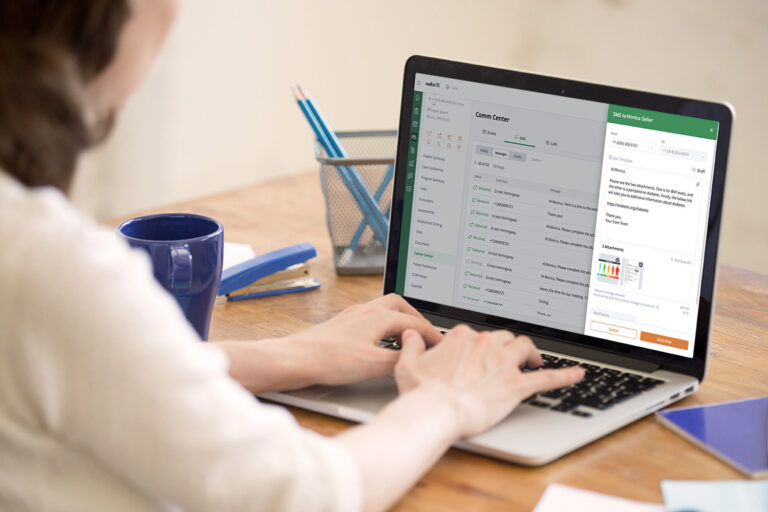As a healthcare provider, you know the staggering statistics surrounding diabetes. Over one in 10 Americans have diabetes. That’s 34.2 million U.S. citizens. This chronic condition has many different causes and affects patients in many different ways. Some are stumped by their diagnosis and confused about how they will live with this life-altering chronic disease. Others may know what actions they should take but could have trouble accessing care when dealing with outside factors—such as social determinants of health.
Diabetes self-management is your patients’ best hope for living a healthy, normal life. With support from their care team and the right tools, patients can thrive while living with diabetes. You have the power to help them succeed in their endeavors by guiding them in proper self-care so they can look forward to good days ahead and overall stable wellness.
Diabetes self-management: teach the value of self-care
Diabetes self-management is an essential survival skill. It’s important for patients to have a care team that they trust to provide medical advice and guide them to make healthy decisions, because the bulk of the work is done at home with lifestyle changes that will help regulate blood sugar levels.
Monitoring blood sugar levels
Monitoring blood sugar levels should be a regular part of diabetes self-management, and your job will be to teach patients how to do so effectively. While other lifestyle habits—such as eating healthy and exercising regularly—can certainly help patients regulate their blood glucose, self-monitoring at least once a day is essential, and they might not know how best to do it on their own without your guidance.
You can support your patients by providing tailored guidelines for exactly when they should be self-monitoring. When patients who are managing diabetes know their blood glucose numbers, they become empowered to make healthy choices that improve their overall quality of life.
Diet
It’s important that patients understand how their nutrition choices affect their blood sugar levels. Your care team should consider partnering with a trusted registered dietitian so your patients can be coached appropriately. When an RD has a holistic understanding of a patient’s health, they can create a customized diabetes diet that helps the patient regulate their blood sugar levels. You can also encourage your patients living with diabetes to:
- Eat regular meals at the same time every day to help their bodies optimize the insulin they produce or receive from diabetes medications.
- Fill their plates with healthy carbohydrates, fiber-rich foods, and good fats to help break down blood glucose, preventing chronic diseases and illnesses that people with diabetes are more likely to develop—such as heart disease and stroke.
With the help of their care team, patients managing type 2 diabetes can create a healthy eating plan that helps them lose weight and better manage their blood glucose levels. Encourage your patients to refer to glycemic index tables to see which foods are best for diabetes self-management if they are confused or overwhelmed.
Exercise
If patients are implementing physical activity for the first time—or if they haven’t been active for a while—motivate them to take it slow and do what feels good for their bodies. Optimally, any activity that raises patients’ heart rates and gets them sweating for at least 30 minutes a day, five times a week, is a beneficial form of exercise!
Rest
While we all know we should be aiming for approximately eight hours of sleep each night, sleeping is especially important for diabetes self-management. Sleep deprivation results in elevated cortisol levels, which triggers insulin resistance. This can undo all of the hard work and disciplined actions that patients with diabetes put into place and spike blood glucose to dangerous levels. Advise your patients in establishing a strict bedtime and following a sleep schedule to help them stay on track.
Overcoming social determinants of health
Patients managing diabetes can live normal, healthy lives—but it isn’t as simple as taking a pill and moving on with their day. Diabetes is an extremely involved condition that relies on patient self-management at home, and as a healthcare expert, you can instruct them on how to best handle this responsibility.
The conditions into which individuals are born, grow, live, work, and age—also known as the social determinants of health—can create barriers to patient care. Fortunately, there are practices that care providers such as yourself can put into place to ensure that they are breaking down barriers and offering the best possible care for every patient—no matter the circumstances.
- Offer online courses. Patients have a lot to learn when they are first diagnosed with diabetes. Offer accessible online education so individuals can get up to speed with best practices for diabetes self-management in no time.
- Offer convenient physical classes. Create a class schedule for those who prefer learning in a physical classroom setting. Make sure your classes are offered in convenient, central locations, outside of standard work hours.
- Consider urban food deserts. Some patients will find it especially difficult to manage their diabetes because they live in a “food desert” and lack access to affordable, nutritious foods, such as fresh produce and whole grains. Make sure that your team is prepared to give realistic recommendations that these patients will actually be able to follow.
- Account for transportation issues. For chronic disease patients who frequent doctor offices and the pharmacy, transportation barriers can quite literally mean life or death. Create a care plan that utilizes telehealth for diabetes patients who might not be able to make regular in-person appointments, or help coordinate care with medical transportation services.
- Help the patient find a strong support system. Diabetes is a chronic disease that affects all aspects of patients’ lives, which is why maintaining a support system is so important to their overall well-being. For patients who don’t have close friends or family members they can lean on, you can recommend community groups to aid patients in creating their own support system.
Make data sharing with others in the care team easy
With so many things for patients to manage and so many social determinants of health potentially creating obstacles to care, it’s clear that organization and structure can make or break a diabetes self-management care plan. With a Patient Relationship Management (PRM) software program, clinicians can track their patients’ health and provide digital support in between in-person appointments.
Offer patients’ preferred communication channels
Thanks to modern technology, there are so many ways to communicate these days. But certain communication channels just make sense for certain people. When looking for software that will improve communication between care teams and patients, make sure there are a number of communication channels that patients can choose from. Whether they prefer to receive messages via phone, text, email or messaging within an app, the flexibility to select what works best for them will help make their already highly-managed—and potentially stressful—lives a little bit easier.
Integrate with wearable health devices
When it comes to managing diabetes, patients have a lot of things to keep track of: blood glucose levels, calories, sleep, and eating schedules, diabetes medications—the list goes on. Wearables are a great way for patients to keep track of everything they need to be self-monitoring.
There’s no reason a PRM shouldn’t sync in order to utilize all of the patient-generated data that wearable technology like smartwatches and constant glucose monitors provide. With valuable information literally at their fingertips, suggest to patients living with diabetes that they use software which relays that data to help their care team come up with an incredibly personalized diabetes self-management plan.
Treat the whole person
No matter what type of diabetes a patient has or how it affects their life, each individual deserves to be treated holistically and as a unique person, they are. It’s important that care centers take comorbidities—such as heart attack, respiratory issues, high blood pressure, etc.—and mental and behavioral health conditions into consideration. Again, diabetes is a chronic disease that affects all aspects of life and requires significant lifestyle changes to manage. You can be a significant help in steering them in the right direction.
Diabetes self-management is such an important part of a patient’s healthcare plan, but the truth is that many of them can’t do the work without your assistance. Implement educational resources, a trusted communication platform, and additional support where and when your patients need it most. Together, you and your patients can work to decrease the number of cases of diabetes in the U.S.
Did you know that Welkin was originally designed as a Care Management software program for diabetes patients? Learn more about living your healthiest life with our diabetes management platform.


